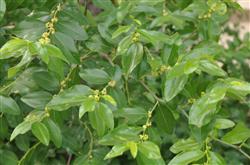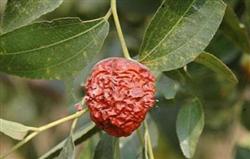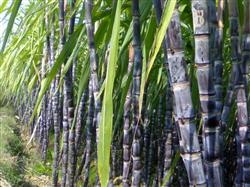Jujube management: why does winter jujube not bear fruit?

Why didn't winter jujube bear fruit? Please introduce the reasons and solutions the main reasons for the failure of winter jujube are as follows: 1. There were three main reasons for the lack of fertilization last year, especially the insufficient application of organic fertilizer, because the bud stage of winter jujube is also a period of rapid growth of jujube hanging. Jujube head growth is very exuberant in the early flowering stage, in a period when several organs of winter jujube tree are in the stage of exuberant growth activity at the same time, the phenomenon of competitive nutrition will appear. The winter jujube tree mainly consumes the nutrients stored in the tree body from budding to fruit-setting stage, that is, the nutrients manufactured and stored in the trunk, branch and root of the tree last year. Therefore, if there was insufficient fertilization last year, it would result in insufficient reserve nutrition, weak tree potential, and prominent contradiction between nutrient supply and demand, resulting in less fruit setting, or even no fruit setting in that year. 2. The influence of fruit setting rate of last year was too much, and there was no thinning of flowers and fruits, coupled with insufficient fertilization, resulting in excessive nutrition consumption, and the tree failed to reserve enough nutrients for growth in the coming year, resulting in little or no fruit setting, resulting in the phenomenon of big and small years. 3. Due to the weather conditions, the blooming period of winter jujube is from the first ten days of June to the first ten days of July. During this period, the climate is dry and the air relative humidity is low, which will lead to the decrease of pollen germination rate, poor fertilization and fruit setting. The hot and dry wind with high temperature and low humidity will cause a large amount of water loss and dry up of jujube flowers and reduce the fruit setting rate. Low temperature, continuous rain will also affect fruit setting, and flowering in the event of "light rain is sunny" weather is beneficial to fruit setting. To solve the non-fruit of winter jujube, we can refer to the following methods: 1. Rational fertilization, re-application of organic fertilizer in the dormant period of jujube, proper topdressing of inorganic fertilizers such as urea and diammonium phosphate and foliar spraying in the early germination, early flowering stage and rapid fruit expansion period. in order to ensure the normal nutrition and reproductive growth of the tree. 2. Although the technical measures of reasonably thinning flowers and fruits to improve the fruit setting rate have laid the foundation for high yield, excessive fruit setting exceeds the tree load, which affects not only the fruit quality of the current year, but also the growth of fruit trees in the coming year. Part of the weak flowers are removed at the flowering stage, and the fruiting base branches are shaken repeatedly during the fruit-setting period, and some jujube fruits that are not firmly set and automatically fall off in the later stage of insufficient nutrition are removed, and then the remaining jujube fruits are removed, the cracked fruits harmed by pests, abnormal fruit shape and poor fruit growth should be removed, and the good fruit in the middle and upper part of jujube hanging should be retained, and the amount of retained fruit should be controlled at a fruit-hanging ratio of 1 to 1.2, which is basically a single fruit. If the fruit is uneven, some of the single hanging and double fruit can be properly retained to ensure the yield of winter jujube. 3. Coring and sprouting can reduce nutrient consumption, benefit flower bud differentiation and improve fruit setting rate by coring jujube head and controlling growth. For the new jujube, which has a poor position, affects the growth of other branches and has no room for development, it should be removed from the base to reduce nutrient consumption, so as to improve the ventilation and light transmission of the crown, increase the photosynthesis of the whole tree and increase the accumulation of nutrients. 4. Other management: spraying water at flowering stage can increase air humidity, reduce scorched flowers, be beneficial to pollen germination and pollination, and improve fruit setting rate. The water spraying period is from the early flowering stage to the full flowering stage, and the best spraying time is in the evening. Because the humidity decreases in the evening, the evaporation is low and the air humidity is kept for a long time, which can provide good conditions for pollination. The number of times of spraying water depends on the weather. In dry years, it should be sprayed several times, usually 3-4 times. Releasing bees during flowering: where there are conditions, releasing bees during flowering can increase the fruit setting rate by more than twice, and the yield can be increased by 20% to 30%, and the closer to the beehive, the better the pollination effect of jujube trees. Spraying micro-fertilizer at flowering stage: spraying boron, zinc and other micro-fertilizers at flowering stage can increase the fruit setting rate. Boron and zinc are indispensable trace elements for plant growth. Boron can promote pollen tube elongation and facilitate fertilization. Click to get more jujube planting techniques click to get more fruit planting techniques
- Prev

Jujube management: what is the fruit shrinking disease of winter jujube?
What is the fruit shrinkage disease of winter jujube? What caused it? How to prevent and cure the fruit shrinkage disease of winter jujube is mainly caused by wind, rain and pests, which is caused by excessive application of nitrogen fertilizer, dense branches and leaves and poor ventilation. Can refer to the following methods for prevention and control: 1, to strengthen orchard management, add.
- Next

What should black sugarcane continuous cropping pay attention to?
What should black sugarcane continuous cropping pay attention to? One of the main reasons for the low yield and poor quality of black-skinned sugarcane is that the soil lacks magnesium, silicon, calcium, zinc, boron, iron, molybdenum, manganese and other trace elements, resulting in insufficient supply of trace elements, resulting in poor growth of sugarcane.
Related
- Moge, come on! The staff of the peasant association in the producing area of cantaloupe were frightened when the crowd gathered.
- Causes and Solutions of low Fruit setting rate of Apple
- Symptoms and control measures of passion fruit virus disease
- Fruit growing lesson: how do apple orchards keep high yields?
- Can you build orchards in the mountains? What are the pros and cons?
- How to manage the coloring period of Crisson grape?
- This paper introduces the processing technology of two kinds of fig products.
- How much is a month for retired teachers in rural areas by 2020?
- How can strawberry planting increase sugar content? We should pay attention to management in many aspects.
- What are the cultivation techniques on how to improve the yield of golden fruit?

